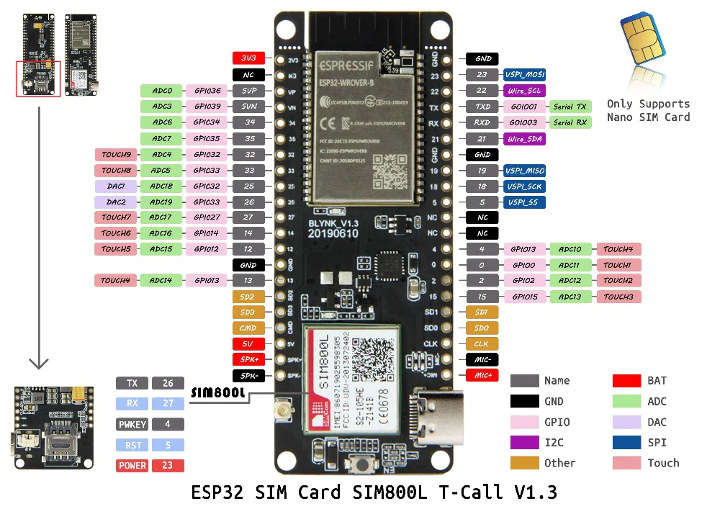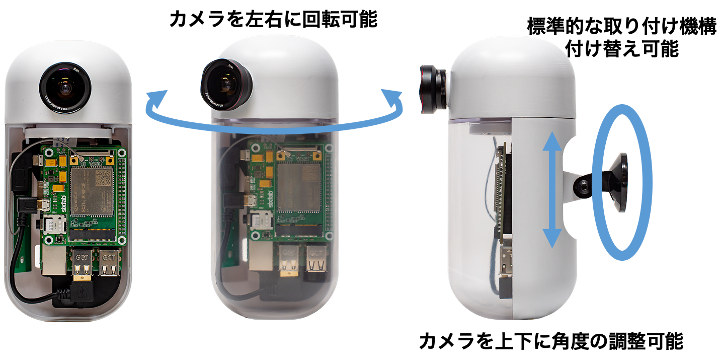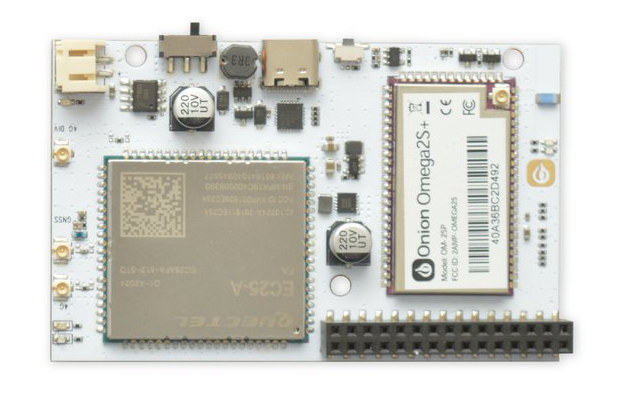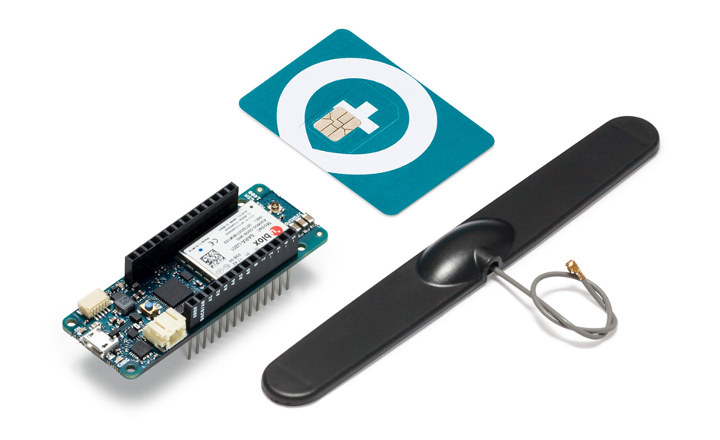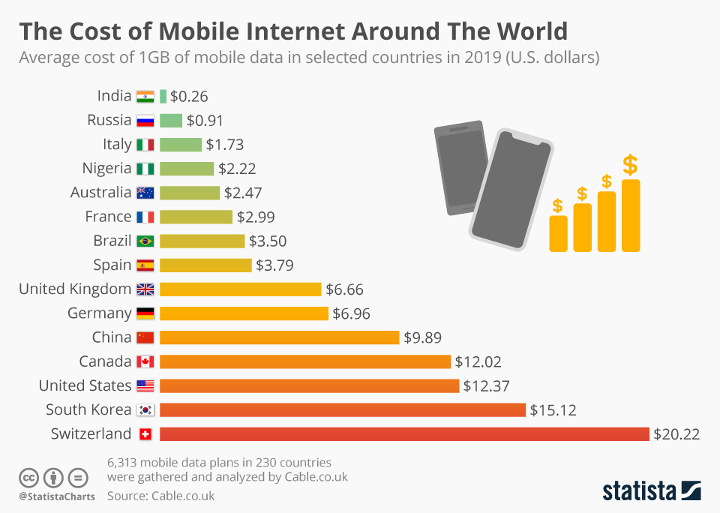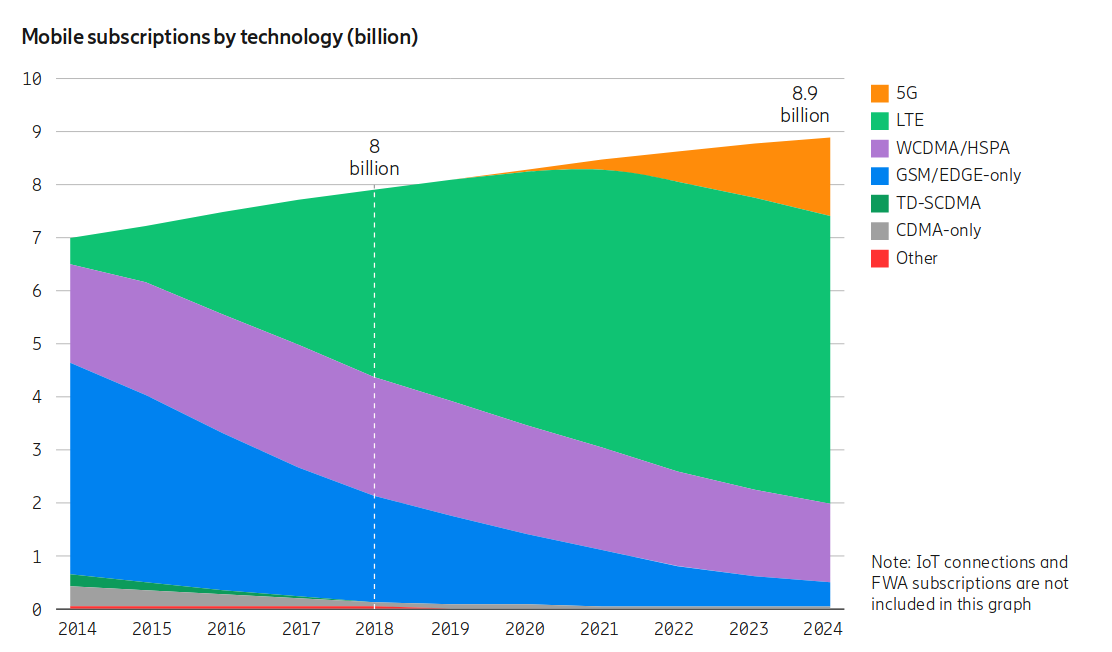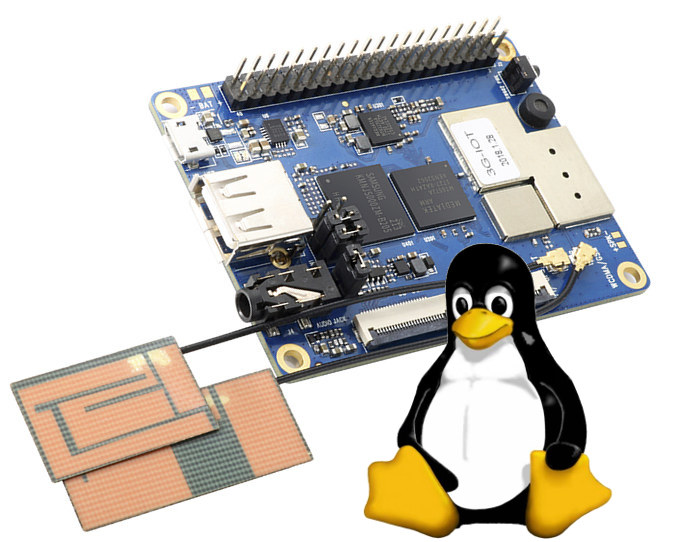LilyGo has launched several TTGO boards usually based on Espressif ESP8266 or ESP32 over the years. Here’s another that could be useful if 2G cellular networks have not sunset in your country: TTGO T-Call. The new board combines ESP32 WiFi & Bluetooth WiSoC with SIMCom SIM800L GPRS module, and also happens to rely on a USB-C port for power and programming instead of the more common micro USB port on this type of hardware. TTGO T-Call board (BLINK_V1.3) specifications: Wireless Module – ESP32-WROVER-B based on ESP32 dual core Xtensa processor @ 240MHz with 520kB SRAM on-chip, 4MB QSPI flash, 8MB PSRAM Connectivity – WiFi 4 802.11 b/g/n (2.4 GHz) up to 150 Mbps Bluetooth 4.2 Classic + LE Cellular – 2G GSM/GPRS via SIMcom SIM800L module + Nano SIM card slot USB – 1x USB-C for power and programming (via CP2104) Expansion – 2x 21-pin headers with UART, SPI, SDIO, […]
S+ Camera Basic Combines Raspberry Pi 3 Board and LTE Shield for Edge Applications
Soracom is a company that provides global IoT network cellular connectivity for businesses in smart IoT agriculture, energy, consumer, manufacturing, transportation, and medical industries, and even provides free IoT SIM cards for evaluation (US/Canada only). The company has just announced the S+ Camera on its Japanese blog. The camera looks to features several off-the-shelf components including a Raspberry Pi 3 board and SixFab Raspberry Pi 3G-4G/LTE Base Shield V2 connecting to Soramcom network. It’s a little confusing as to why a cellular IoT company would develop an LTE camera since streaming video requires bitrates not normally associated with IoT. The blog post does provide a few more details however, as S + Camera is said to run SORACOM Mosaic software which enables “algorithms for edge processing cameras and management and operation of cameras”. That means it’s quite possible the video will not be streamed, but edge processing/computing usually means AI is […]
Onion Omega2 LTE Board Combines WiFi, 4G LTE and GNSS Connectivity (Crowdfunding)
Onion has launched several compact OpenWrt WiFi boards for IoT projects over the years starting with their Onion Omega board in 2015, and the latest so far being Onion Omega2 Pro with a massive 8GB storage. The company has now launched a new model with 4G LTE connectivity called Onion Omega2 LTE, based on Omega2S+ module, and also featuring GNSS global satellite positioning capability. Onion Omega2 LTE specifications: WiFi Module – Onion Omega2S+ IoT computer module with MediaTek MT7688 MIPS CPU @ 580 MHz, 128 MB RAM, 32 MB storage Cellular and GNS Module – Quectel EC25 LTE Cat 4 modem that delivers 150 Mbps downlink and 50 Mbps uplink data rates, provided either for North America or global markets External Storage – MicroSD card slot up to 2 TB (once such cards become available…) Connectivity 2.4 GHz 802.11 b/g/n Wi-Fi 4 + onboard 2 dBi direction chip antenna & […]
Arduino SIM for Arduino IoT Cloud Includes 10 MB of Free Data
I’ve been using Hologram developer SIM card for cellular IoT hardware reviews since it’s really great for evaluation as the company offers 1MB of data for free monthly. It’s supposed to work worldwide, but recently I discovered that while 3G worked fine in Thailand, the card would not support NB-IoT just yet. More companies are now offering this type of global cellular IoT SIM cards such as Twilio or SORACOM, and Arduino is now joining the fray by offering the Arduino SIM card specifically designed to connect to Arduino IoT cloud. The Arduino SIM card currently works with Arduino MKR GSM 1400 board only, and Arm Pelion Connectivity Management provides the cellular service with a global roaming profile than enables connectivity in over 100 countries at a low cost. The first 90 days are actually free if you use less than 10MB of data, after which the price is 5MB […]
Cost of Mobile Data Around the World
The price of products often vary around the world due to taxes, regulations, and cost of living. In many cases, that’s just a few tens of percents, but in some others the price may vary a lot more, as in many folds. For example, medicines are usually way more expensive in developed countries – and harder to buy -, and based on a study by Cable.co.uk, the price of 1GB mobile data varies massively across the world with India having the cheapest average cost of $0.26 US, and Zimbabwe the highest at $75.20. Price varies a lot even for neighboring countries. So if you live in Geneva in Switzerland where the average price for 1GB is $20.22, it may pay off to get signal from France (if possible) where the average cost is only $2.99. One should bear in mind that determining the average price of 1GB of mobile data […]
Cellular Forecasts for 2024 – 1.5 Billion 5G Subscriptions, 4 Billion Cellular IoT Devices
5G has yet to really take off, as it’s only available in a few cities, but a recent report publishes by Ericsson provides some forecasts for the future of 5G and cellular IoT connectivity, as well as interesting numbers of the current state of cellular networks. There are now 7.9 billion mobile subscriptions, more than humans, including 5.7 billion mobile broadband subscription, with Asia clearly dominating the field due to its much larger population. Asia also accounts for most of the recent growth in subscriptions, and interestingly people in Central and Eastern Europe (including Russia) especially appears to need more than one mobile subscription with 142% penetration, which means on average one person has 1.4 mobile subscriptions. There are more subscriptions than people in most of the continents/countries, but to a lesser extent, and India (87%) and Africa (82%) are the only exceptions. The chart above allows us to look […]
Orange Pi 3G-IoT Board Finally Gets a Linux Image
Shenzhen Xunlong has launched several cellular IoT boards over the last few years with Orange Pi 2G-IoT, Orange Pi 3G-IoT and Orange Pi 4G-IoT, but each time, they are launched with Android support only. Linux support on the 2G board has never been great, while the Android 8.1 SDK for Orange Pi 4G-IoT was released earlier this year, but no Linux image are available. This leaves us with Orange Pi 3G-IoT board that just got its first Linux based firmware images released today on both Baidu and Google Drive cloud storage storage services. Four images are available for Orange Pi 3G-IoT-A (256MB DDR2) and Orange Pi 3G-IoT-B (512MB DDR2) boards with images booting from eMMC flash or micro SD card. A shell script (tar_image.sh) is provided to flash the image to the micro SD card since the latter for follow a specific partition layout. Sadly, there’s no mention of the […]
Giveaway Week – ThaiEasyElec 3G Raspberry Pi HAT
You’ll need a 40-pin Raspberry Pi board for this giveaway. Quectel UC20 based ThaiEasyElec 3G Raspberry Pi HAT adds 3G / 2G connectivity to the popular development board. I”l send the board with the full kit include GPS/GLONASS antenna, cellular antenna, headers and spacers. I explained how to use the board in “How to Use 3G and GPS on Raspberry Pi” post, and I found that it was pretty easy working with GPS and 3G using Hologram SIM card by following the instructions provided by ThaiEasyElec. I could also find alternative connection method for this type of board on the Internet. To enter the draw simply leave a comment below. Other rules are as follows: Only one entry per contest. I will filter out entries with the same IP and/or email address. Contests are open for 48 hours starting at 10am (Bangkok time) every day. Comments will be closed after […]


